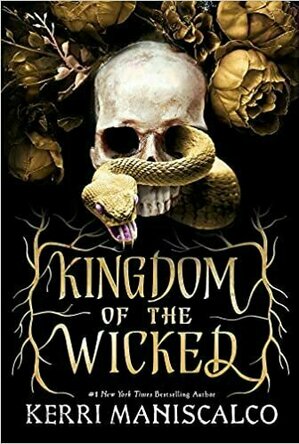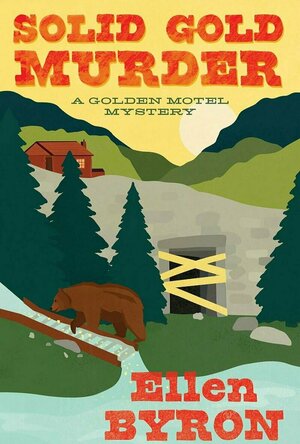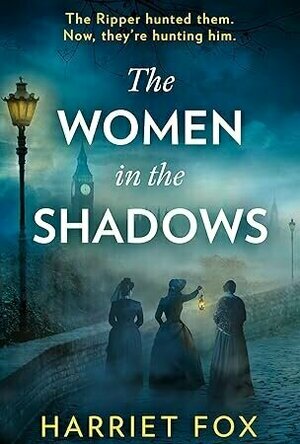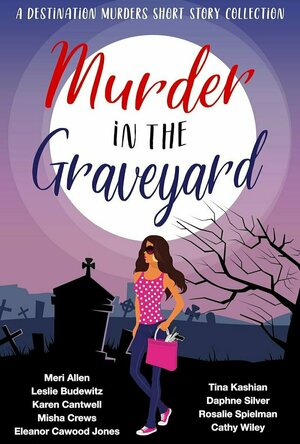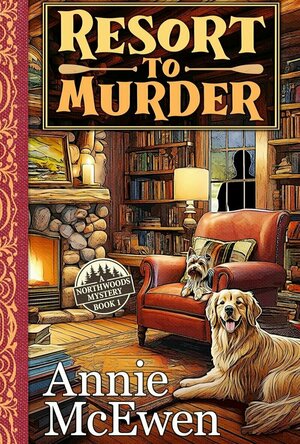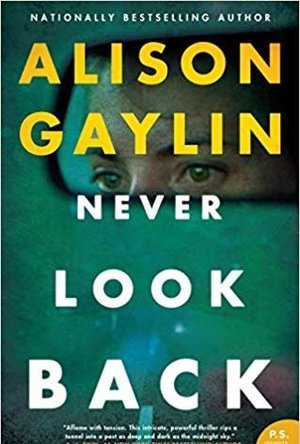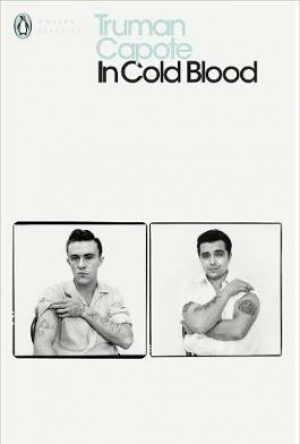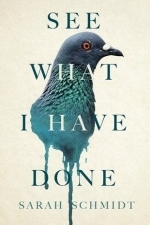Search
Search results
Lyndsey Gollogly (2893 KP) rated Kingdom of The Wicked in Books
Apr 18, 2024
73 of 220
Kindle
Kingdom of the Wicked ( Book 1)
By Kerri Maniscalco
⭐️⭐️⭐️⭐️
Two sisters.One brutal murder. A quest for vengeance that will unleash Hell itself... And an intoxicating romance. Emilia and her twin sister Vittoria are streghe -- witches who live secretly among humans, avoiding notice and persecution. One night, Vittoria misses dinner service at the family's renowned Sicilian restaurant. Emilia soon finds the body of her beloved twin...desecrated beyond belief. Devastated, Emilia sets out to find her sister's killer and to seek vengeance at any cost-even if it means using dark magic that's been long forbidden. Then Emilia meets Wrath, one of the Wicked-princes of Hell she has been warned against in tales since she was a child. Wrath claims to be on Emilia's side, tasked by his master with solving the series of women's murders on the island. But when it comes to the Wicked, nothing is as it seems...
This was very good I really enjoyed it. The characters were so well done and I loved the beasts (demons) of hell. The story is really interesting and I’m looking forward to getting more of these sinfully wicked brothers.
Kindle
Kingdom of the Wicked ( Book 1)
By Kerri Maniscalco
⭐️⭐️⭐️⭐️
Two sisters.One brutal murder. A quest for vengeance that will unleash Hell itself... And an intoxicating romance. Emilia and her twin sister Vittoria are streghe -- witches who live secretly among humans, avoiding notice and persecution. One night, Vittoria misses dinner service at the family's renowned Sicilian restaurant. Emilia soon finds the body of her beloved twin...desecrated beyond belief. Devastated, Emilia sets out to find her sister's killer and to seek vengeance at any cost-even if it means using dark magic that's been long forbidden. Then Emilia meets Wrath, one of the Wicked-princes of Hell she has been warned against in tales since she was a child. Wrath claims to be on Emilia's side, tasked by his master with solving the series of women's murders on the island. But when it comes to the Wicked, nothing is as it seems...
This was very good I really enjoyed it. The characters were so well done and I loved the beasts (demons) of hell. The story is really interesting and I’m looking forward to getting more of these sinfully wicked brothers.
Mark @ Carstairs Considers (2464 KP) rated Solid Gold Murder in Books
Jul 30, 2025 (Updated Jul 30, 2025)
Second Gold Rush Leads to a Solid Second Mystery
When some guests find real gold flakes at Dee’s motel, it sets off a second gold rush in the area. Among those who show up are Sylvan Burr, a smug tech mogul who is looking to strike it rich again. When someone shoves him down a mine shaft, the question is who didn’t want the man dead. Can Dee figure out what happened?
I love the first book in this series, and I’m happy that this book is a solid follow up. The location is great, one I’d want to visit between murders. The mystery is strong with plenty to keep us guessing. And that’s not to mention several subplots that weave in and out of the story. I do wish we saw more of Jonas, Dee’s new boyfriend, but that’s a minor complaint. The rest of the cast are fun, and the suspects solid. We also get some great laughs. In the way of extras, there are some road trip tips and a recipe. This is another delightful mystery from Ellen Byron. You’ll be glad you picked it up.
I love the first book in this series, and I’m happy that this book is a solid follow up. The location is great, one I’d want to visit between murders. The mystery is strong with plenty to keep us guessing. And that’s not to mention several subplots that weave in and out of the story. I do wish we saw more of Jonas, Dee’s new boyfriend, but that’s a minor complaint. The rest of the cast are fun, and the suspects solid. We also get some great laughs. In the way of extras, there are some road trip tips and a recipe. This is another delightful mystery from Ellen Byron. You’ll be glad you picked it up.
Merissa (13597 KP) rated The Women in the Shadows in Books
Oct 1, 2025
THE WOMEN IN THE SHADOWS is a standalone story that focuses on Jack the Ripper's crimes, but told from the perspective of women - some of whom he murdered, some investigating.
Bet, Emma, and Maggie are all different - ages, statuses, and relationships - but they are all connected by the horrendous murders that are happening in Whitechapel. Unhappy with the way the police are referring to the victims and the progress being made, they join forces to investigate it themselves. This leads to some events that seemed almost too funny to be in this book. It was pretty obvious who the killer was, but I enjoyed their thought processes and actions as they arrived at the same conclusion.
Evenly paced, with moments of action interspersed with calm, this was an easy read that I enjoyed. I would also be happy to return to these three ladies, just to see what trouble they could find next. Definitely recommended by me.
** Same worded review will appear elsewhere. **
* A copy of this book was provided to me with no requirements for a review. I voluntarily read this book; the comments here are my honest opinion. *
Merissa
Archaeolibrarian - I Dig Good Books!
Oct 1, 2025
Bet, Emma, and Maggie are all different - ages, statuses, and relationships - but they are all connected by the horrendous murders that are happening in Whitechapel. Unhappy with the way the police are referring to the victims and the progress being made, they join forces to investigate it themselves. This leads to some events that seemed almost too funny to be in this book. It was pretty obvious who the killer was, but I enjoyed their thought processes and actions as they arrived at the same conclusion.
Evenly paced, with moments of action interspersed with calm, this was an easy read that I enjoyed. I would also be happy to return to these three ladies, just to see what trouble they could find next. Definitely recommended by me.
** Same worded review will appear elsewhere. **
* A copy of this book was provided to me with no requirements for a review. I voluntarily read this book; the comments here are my honest opinion. *
Merissa
Archaeolibrarian - I Dig Good Books!
Oct 1, 2025
Mark @ Carstairs Considers (2464 KP) rated Murder in the Graveyard in Books
Oct 16, 2025
Watch Out for the Extra Body
Just in time for Halloween, we get this fun collection of murders set in and around graveyards. In addition to the unexpected dead body or two, we also get involved in revenge, teenage parties, amnesia, family feuds, and an escaped convict. Many of these stories are set around Halloween, although a few take place at other times of the year. And yes, a couple lean into the spooky, but it always fits the story, so I didn’t mind.
Many of these authors featured their series stars. I’ve read many of those novels, so it was fun to spend time with them. For those who I haven’t met outside of these short story collections, I didn’t feel like I was missing anything with the stories we got here. Each story was fun, taking me about half an hour to read. With nine stories, we get plenty of content. I was smiling through most of them, even laughing some. And the stories kept me engaged from start to finish.
Whether you read this book now or open it in a different season of the year, you’ll enjoy these stories.
Many of these authors featured their series stars. I’ve read many of those novels, so it was fun to spend time with them. For those who I haven’t met outside of these short story collections, I didn’t feel like I was missing anything with the stories we got here. Each story was fun, taking me about half an hour to read. With nine stories, we get plenty of content. I was smiling through most of them, even laughing some. And the stories kept me engaged from start to finish.
Whether you read this book now or open it in a different season of the year, you’ll enjoy these stories.
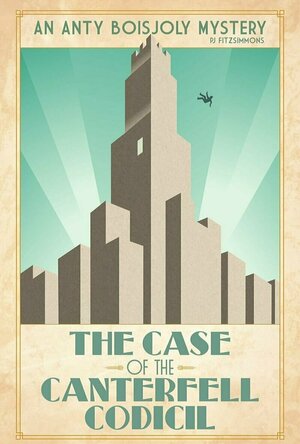
The Case of the Canterfell Codicil
Book
There's a literary niche for all tastes including those who think that either Dorothy L Sayers...
Mark @ Carstairs Considers (2464 KP) rated Resort to Murder in Books
Jul 31, 2025
Who Killed the Developer at Emmy’s Family Resort?
When her life takes an unexpected turn, Emmy Cooper heads to visit her family who runs a resort on the shores of a lake in Wisconsin. When she arrives, she learns that a developer is trying to buy up her family’s land and surrounding land to build a mega resort. While no one is interested in selling, he isn’t taking no for an answer. When he turns up dead on Emmy’s family’s property the morning after a public fight with Emmy’s father, he looks like the prime suspect. Can Emmy clear her dad?
I’ve been hearing lots of good things about this series, and I can see why. The setting is wonderful. It’s one of those places I’d love to visit between murders. The cast of characters are fantastic as well. You can tell just how much they all care for each other. The plot was strong, too, and kept me guessing until we reached the logical climax. Unfortunately, the dialogue was often summarized for us, which pulled me out of the book. I’m still looking forward to visiting this new group of friends again soon.
I’ve been hearing lots of good things about this series, and I can see why. The setting is wonderful. It’s one of those places I’d love to visit between murders. The cast of characters are fantastic as well. You can tell just how much they all care for each other. The plot was strong, too, and kept me guessing until we reached the logical climax. Unfortunately, the dialogue was often summarized for us, which pulled me out of the book. I’m still looking forward to visiting this new group of friends again soon.
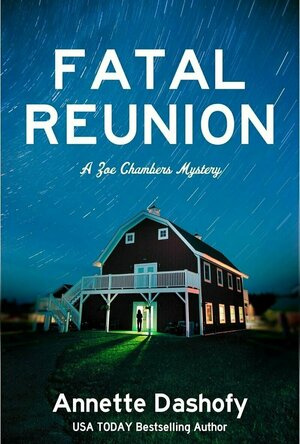
Fatal Reunion
Book
As Monongahela County's new coroner Zoe Chambers-Adams gears up for a third day searching for a...
Kristy H (1252 KP) rated Never Look Back in Books
Sep 2, 2019
For Quentin Garrison, his podcast, entitled Closure, is truly about just that--closure. It centers on a series of murders in the 1970s committed by teens Gabriel LeRoy and April Cooper. The victims included Quentin's mother's little sister and his grandmother. As a result, Quentin has spent most of his life raised by a neglectful, drug addict mom. For Robin Diamond, a columnist, the podcast causes only confusion. When Quentin contacts her about it, asking specifically about April Cooper and tying her to Robin's own mother, Robin is bewildered. But the more she delves into the murders, the more she starts to wonder. Then there's a terrible home invasion at her parent's house, killing her father and leaving her mom unconscious. What exactly happened back in the '70s--and, now, in the home invasion?
This was an excellent thriller that had me hooked from the first page. It's dark, gritty, and utterly mesmerizing. When I started it, I was thinking to myself, not another podcast mystery, but little did I know... this book is totally addictive and brings in the podcast element in a seamless, fresh way.
It's told from the perspective of several of our main characters--particularly Robin and Quentin. We also get excerpts from a school assignment of April's when she was fifteen: letters to her future child. These slowly reveal what happened during the killings, and they are told in a spot-on voice of a fifteen-year-old girl. The way everything is woven together is perfect: I found myself completely captivated and read basically the last half of the book in one breathless setting, staying up past my bedtime to finish it.
We learn that both Gabriel and April died in a fire at the site of their last attempted murder. So when Quentin receives a tip claiming that April Cooper is still alive, it changes everything, including the focus of his podcast. When he starts to believe that Robin's mother is April, things get even more interesting. I loved the suspense--constantly wondering if April was alive and if she was, who she could be. And then, there's the aspect of was April "good" or "bad" during the killings. So many people blamed her for the deaths of their loved ones, and nothing is black or white in this book.
Even Quentin. Since his past is strongly affected by the murders, we find ourselves wondering if we can trust him, too. Quentin's grandfather basically gave up raising his daughter, Kate--Quentin's mother--after the death of his wife and young daughter. As such, Quentin's own mother wasn't much of a parent to him. Quentin's own bitterness and anger shines through--a strong theme in the book. Can we rely on someone so angry, we wonder? I felt for him, and his devoted husband and loving best friend and podcast partner. So many of the characters are intense, and each is so well-crafted and unique. Each flew off the page.
This is often a dark book, and there are many scenes of violence. But, for me, it was the emotional scenes that were the toughest to read. There are many touching moments, too, and I found myself attached to several of the characters. Reading young April's letters was quite a feat. Gaylin is such an excellent writer, and she just pulls you into the story so effortlessly--you feel as if you are there with her characters. Throw in some great twists and turns and this is an excellent and suspenseful novel.
The ending was a tough one, but I get it. Overall, I really enjoyed this dark psychological thriller. I am just loving Gaylin's recent books and need to go back and read some of her previous works (there's a little Brenna Spector shoutout in this one for those of you who are fans). Definitely recommend! 4.5 stars.
This was an excellent thriller that had me hooked from the first page. It's dark, gritty, and utterly mesmerizing. When I started it, I was thinking to myself, not another podcast mystery, but little did I know... this book is totally addictive and brings in the podcast element in a seamless, fresh way.
It's told from the perspective of several of our main characters--particularly Robin and Quentin. We also get excerpts from a school assignment of April's when she was fifteen: letters to her future child. These slowly reveal what happened during the killings, and they are told in a spot-on voice of a fifteen-year-old girl. The way everything is woven together is perfect: I found myself completely captivated and read basically the last half of the book in one breathless setting, staying up past my bedtime to finish it.
We learn that both Gabriel and April died in a fire at the site of their last attempted murder. So when Quentin receives a tip claiming that April Cooper is still alive, it changes everything, including the focus of his podcast. When he starts to believe that Robin's mother is April, things get even more interesting. I loved the suspense--constantly wondering if April was alive and if she was, who she could be. And then, there's the aspect of was April "good" or "bad" during the killings. So many people blamed her for the deaths of their loved ones, and nothing is black or white in this book.
Even Quentin. Since his past is strongly affected by the murders, we find ourselves wondering if we can trust him, too. Quentin's grandfather basically gave up raising his daughter, Kate--Quentin's mother--after the death of his wife and young daughter. As such, Quentin's own mother wasn't much of a parent to him. Quentin's own bitterness and anger shines through--a strong theme in the book. Can we rely on someone so angry, we wonder? I felt for him, and his devoted husband and loving best friend and podcast partner. So many of the characters are intense, and each is so well-crafted and unique. Each flew off the page.
This is often a dark book, and there are many scenes of violence. But, for me, it was the emotional scenes that were the toughest to read. There are many touching moments, too, and I found myself attached to several of the characters. Reading young April's letters was quite a feat. Gaylin is such an excellent writer, and she just pulls you into the story so effortlessly--you feel as if you are there with her characters. Throw in some great twists and turns and this is an excellent and suspenseful novel.
The ending was a tough one, but I get it. Overall, I really enjoyed this dark psychological thriller. I am just loving Gaylin's recent books and need to go back and read some of her previous works (there's a little Brenna Spector shoutout in this one for those of you who are fans). Definitely recommend! 4.5 stars.
Hadley (567 KP) rated In Cold Blood: A True Account of a Multiple Murder and Its Consequences in Books
Aug 2, 2020
The writing (1 more)
The flow
In the 'Introduction' of Capote's true crime novel In Cold Blood, American writer Bob Colacello states: "Capote was one of the first who dared to elevate journalism to the level of art. In Cold Blood is a work of great discipline and even greater restraint, a tale of fate, as spare and elegiac as a Greek tragedy, as rich in its breadth and depth as the classic French novels of Stendhal and Flaubert. 'We all have our souls and we all have facades,' Truman Capote told his friend Kay Meehan a year or so before he came upon the news that would inspire his masterpiece, 'and then there's something in between that makes us function as people. That's what I have the ability to communicate.' "
The novel, which was published in 1965, is an eyewitness account of Capote's visitation to the scene of the murder as well as meetings with the murderers and townspeople- - - a retelling of the crime and aftermath, mostly from the eyes of those affected, by hundreds of hours of interviews and interrogations. The novel, ultimately, was the end of Capote which led him to alcoholism that took his life in 1984.
Like most small-town murders, a tension between residences is created when a well-known and well-liked family of four is brutally murdered, and everyone begins to point a finger at the other: "But afterward the townspeople, theretofore sufficiently unfearful of each other to seldom trouble to lock their doors, found fantasy re-creating them over and again - - - those somber explosions that stimulated fires of mistrust in the glare of which many old neighbors viewed each other strangely, and as strangers." Fortunately, the KBI (Kansas Bureau of Investigation) didn't allow these accusations to keep them from finding the real killers.
" 'Deep down,' Perry continued, 'way, way rock bottom, I never thought I could do it. A thing like that.' " Perry Smith, one of the murderers, confesses to his cohort and partner-in-crime, Richard Hickock, about murdering the Clutter family. "Presently, he said, 'Know what it is that really bugs me? About that other thing[Clutter murder]? It's just I don't believe it- - - that anyone can get away with a thing like that.' And he suspected that Dick [Richard] didn't, either. For Dick was at least partly inhabited by Perry's mystical-moral apprehensions. Thus: 'Now, just shut up!' "
Capote writes clearly of the impact that Smith's and Hickock's past may have played leading up to the murders, mostly focusing on Smith's traumatic childhood. During the trial portion of the book, a psychologist is brought in to point out how the two murderers may not have been responsible for their actions due-to instances in their past - - - a horrific car crash in Hickock's that left him with a lop-sided face and black-out spells, as well as Smith being physically and emotional abused by his alcoholic mother and father. In exploring these traumas, In Cold Blood leaves the impression that these two men were merely ticking time bombs and that the Clutter family, unfortunately, had to pay for it.
The trauma shared by Hickock and Smith help to shape the two murderers into actual human beings rather than monsters throughout the novel: one scene, where we get to read a letter to Smith from his last living sister, readers get to see how he was perceived by his family members, as his sister goes on to degrade him to the maturity level of a child and that she is above him because of that- - -but she also reveals her jealousy of their father loving him more than he ever loved her (despite the excessive abuse). A close friend of Smith's tells him to be careful writing her anymore because he believes that: 'they can only serve to increase your already dangerous anti-social instincts.'
Part of the narrative, too, is the KBI agent in-charge of the Clutter murder, Alvin Dewey: One day while visiting Holcomb's well-known cafe (Hartman's) where Dewey is told he looks awful from weight loss and fatigue - - - Dewey recalls that he had spent: 'two wearying and wasted days trying to trace that phantom pair, the Mexicans sworn by Paul Helm to have visited Mr. Clutter on the eve of the murders.' And then he gets heckled by a local, who wants to know why he hasn't found the people responsible yet,but Dewey simply smiles and walks away, having put up with numerous people being angry that the murders were taking so long to solve.
But it wasn't footwork that got the pair arrested, it was an old cellmate who had given Hickock the idea that there was $10,000 in a safe at the Clutter farm that came forward: (read this on my blog because I had to cut it out since my review was too long!).
Meanwhile, readers also get to experience Hickock and Smith's troubles as they are on the run after the murders which is done masterfully by Capote. And although one would assume that the killers would stay as far away from Kansas as possible, the two end up back there, only to miraculously get out before the police can catch up with them. The pair decide to head to Florida, where, on December 19, 1959, an entire family was murdered in the exact same way as the Clutters; Hickock and Smith both adamantly denied that they were involved with it - - - and back in 2012- - - Hickock and Smith's bodies were exhumed to compare their DNA with a profile found on one of the victim's clothing: they were not a match. The case remains unsolved til this day.
" Presently he[Smith] came across an inner-page story that won his entire attention. It concerned murder, the slaying of a Florida family, a Mr. and Mrs. Clifford Walker, their four-year-old son, and their two-year-old daughter. Each of the victims, though not bound or gagged, had been shot through the head with a .22 weapon. The crime, clueless and apparently motiveless, had taken place Saturday night, December 19, at the Walker home, on a cattle-raising ranch not far from Tallahassee."
Not soon after the pair leave the Florida beaches, they are arrested on what they believe to be parole violations, but it's clear, when the arresting officers are KBI agents that they had been caught for the Clutter murders. " 'Listen good, Perry. Because Mr. Duntz[KBI agent] is going to tell you where you really were...' Midway in the questioning, after he'd[Smith] begun to notice the number of allusions to a particular November weekend, he'd nerved himself for what he knew was coming, yet when it did, when the big cowboy with the sleepy voice said, 'You were killing the Clutter family' - - - well, he'd damn near died. That's all. "
The confession that follows is the most intense part of the book, given in it's entirety, readers finally get to know what happened to the Clutter family that cold night in November, 1959. Smith reveals that he never had the intention to kill anyone in the home, and that when the safe hadn't been found, he had fully intended to leave, even without Hickock, but what kept him there was Hickock threatening to rape Nancy Clutter. Smith states that he hates people who can't control themselves sexually, and that he didn't allow his partner to touch her at all. He also reveals that he thought about killing Hickock afterwards,stating: " no witnesses."
Capote didn't write 'In Cold Blood' until after Hickock and Smith were executed. The amount of interviews, court room appearances, and even witnessing the executions of both murderers shines through in this novel. But the book has also brought about doubters; a handful of people have since come forward to state that Capote's masterpiece is either 'not the full story' or 'completely wrong.' Just as recent as 2017, a man came forward with a 'manuscript' of a book that Hickock was writing, that contained a different confession on how and why the murders took place- - - Hickock states in this unpublished manuscript that a man by the name 'Roberts' had hired him and Smith to kill the Clutters.
Whether or not you believe that Capote wrote the whole truth or some of the truth, this novel is flawless and beautiful. The writing is poetic and the flow of the story keeps moving, page after page, never stopping long enough to bore the reader. I highly recommend this book as a MUST READ for anyone who loves the True Crime genre.
The novel, which was published in 1965, is an eyewitness account of Capote's visitation to the scene of the murder as well as meetings with the murderers and townspeople- - - a retelling of the crime and aftermath, mostly from the eyes of those affected, by hundreds of hours of interviews and interrogations. The novel, ultimately, was the end of Capote which led him to alcoholism that took his life in 1984.
Like most small-town murders, a tension between residences is created when a well-known and well-liked family of four is brutally murdered, and everyone begins to point a finger at the other: "But afterward the townspeople, theretofore sufficiently unfearful of each other to seldom trouble to lock their doors, found fantasy re-creating them over and again - - - those somber explosions that stimulated fires of mistrust in the glare of which many old neighbors viewed each other strangely, and as strangers." Fortunately, the KBI (Kansas Bureau of Investigation) didn't allow these accusations to keep them from finding the real killers.
" 'Deep down,' Perry continued, 'way, way rock bottom, I never thought I could do it. A thing like that.' " Perry Smith, one of the murderers, confesses to his cohort and partner-in-crime, Richard Hickock, about murdering the Clutter family. "Presently, he said, 'Know what it is that really bugs me? About that other thing[Clutter murder]? It's just I don't believe it- - - that anyone can get away with a thing like that.' And he suspected that Dick [Richard] didn't, either. For Dick was at least partly inhabited by Perry's mystical-moral apprehensions. Thus: 'Now, just shut up!' "
Capote writes clearly of the impact that Smith's and Hickock's past may have played leading up to the murders, mostly focusing on Smith's traumatic childhood. During the trial portion of the book, a psychologist is brought in to point out how the two murderers may not have been responsible for their actions due-to instances in their past - - - a horrific car crash in Hickock's that left him with a lop-sided face and black-out spells, as well as Smith being physically and emotional abused by his alcoholic mother and father. In exploring these traumas, In Cold Blood leaves the impression that these two men were merely ticking time bombs and that the Clutter family, unfortunately, had to pay for it.
The trauma shared by Hickock and Smith help to shape the two murderers into actual human beings rather than monsters throughout the novel: one scene, where we get to read a letter to Smith from his last living sister, readers get to see how he was perceived by his family members, as his sister goes on to degrade him to the maturity level of a child and that she is above him because of that- - -but she also reveals her jealousy of their father loving him more than he ever loved her (despite the excessive abuse). A close friend of Smith's tells him to be careful writing her anymore because he believes that: 'they can only serve to increase your already dangerous anti-social instincts.'
Part of the narrative, too, is the KBI agent in-charge of the Clutter murder, Alvin Dewey: One day while visiting Holcomb's well-known cafe (Hartman's) where Dewey is told he looks awful from weight loss and fatigue - - - Dewey recalls that he had spent: 'two wearying and wasted days trying to trace that phantom pair, the Mexicans sworn by Paul Helm to have visited Mr. Clutter on the eve of the murders.' And then he gets heckled by a local, who wants to know why he hasn't found the people responsible yet,but Dewey simply smiles and walks away, having put up with numerous people being angry that the murders were taking so long to solve.
But it wasn't footwork that got the pair arrested, it was an old cellmate who had given Hickock the idea that there was $10,000 in a safe at the Clutter farm that came forward: (read this on my blog because I had to cut it out since my review was too long!).
Meanwhile, readers also get to experience Hickock and Smith's troubles as they are on the run after the murders which is done masterfully by Capote. And although one would assume that the killers would stay as far away from Kansas as possible, the two end up back there, only to miraculously get out before the police can catch up with them. The pair decide to head to Florida, where, on December 19, 1959, an entire family was murdered in the exact same way as the Clutters; Hickock and Smith both adamantly denied that they were involved with it - - - and back in 2012- - - Hickock and Smith's bodies were exhumed to compare their DNA with a profile found on one of the victim's clothing: they were not a match. The case remains unsolved til this day.
" Presently he[Smith] came across an inner-page story that won his entire attention. It concerned murder, the slaying of a Florida family, a Mr. and Mrs. Clifford Walker, their four-year-old son, and their two-year-old daughter. Each of the victims, though not bound or gagged, had been shot through the head with a .22 weapon. The crime, clueless and apparently motiveless, had taken place Saturday night, December 19, at the Walker home, on a cattle-raising ranch not far from Tallahassee."
Not soon after the pair leave the Florida beaches, they are arrested on what they believe to be parole violations, but it's clear, when the arresting officers are KBI agents that they had been caught for the Clutter murders. " 'Listen good, Perry. Because Mr. Duntz[KBI agent] is going to tell you where you really were...' Midway in the questioning, after he'd[Smith] begun to notice the number of allusions to a particular November weekend, he'd nerved himself for what he knew was coming, yet when it did, when the big cowboy with the sleepy voice said, 'You were killing the Clutter family' - - - well, he'd damn near died. That's all. "
The confession that follows is the most intense part of the book, given in it's entirety, readers finally get to know what happened to the Clutter family that cold night in November, 1959. Smith reveals that he never had the intention to kill anyone in the home, and that when the safe hadn't been found, he had fully intended to leave, even without Hickock, but what kept him there was Hickock threatening to rape Nancy Clutter. Smith states that he hates people who can't control themselves sexually, and that he didn't allow his partner to touch her at all. He also reveals that he thought about killing Hickock afterwards,stating: " no witnesses."
Capote didn't write 'In Cold Blood' until after Hickock and Smith were executed. The amount of interviews, court room appearances, and even witnessing the executions of both murderers shines through in this novel. But the book has also brought about doubters; a handful of people have since come forward to state that Capote's masterpiece is either 'not the full story' or 'completely wrong.' Just as recent as 2017, a man came forward with a 'manuscript' of a book that Hickock was writing, that contained a different confession on how and why the murders took place- - - Hickock states in this unpublished manuscript that a man by the name 'Roberts' had hired him and Smith to kill the Clutters.
Whether or not you believe that Capote wrote the whole truth or some of the truth, this novel is flawless and beautiful. The writing is poetic and the flow of the story keeps moving, page after page, never stopping long enough to bore the reader. I highly recommend this book as a MUST READ for anyone who loves the True Crime genre.
Louise (64 KP) rated See What I Have Done in Books
Jul 2, 2018
*I received a copy of this book from Netgalley and the Publisher Grove Atlantic in exchange for an honest review*
I do like reading Historical Fiction but even more so when the book is based on a true story. This is the story following the murders of Andrew and Abby Borden. They were found with their skulls smashed in by their daughter Lizzie. Lizzie and Emma Borden are spinsters and still live with their father, step-mother and Bridget the maid. They seemed to have a sheltered life and been well-kept by their father. This story delves in to the lives of the Bordens and what happened behind closed doors of this well-respected family.
<b>"Lizzie Borden took an axe, And gave her mother forty whacks; When she saw what she had done, She gave her father forty-one,"</b>
I am going to be truthful and say that this book was ok but nothing really blew me away. I don’t think that there was much added to this story than what you could actually read on Wikipedia. The story was repetitive, slow and didn’t always hold my attention. The problem with stories like these are you know how they are going to end you don’t have that thrill of finding out who done it. I liked the writing style of this book and the way she wrote Lizzie’s character.
The story is told from four perspectives, Lizzie, Emma, Bridget and Benjamin.It was through them that the story was told of the events leading up to the murders and afterwards. The character that stuck out the me was Lizzie, she was spoilt, childish, rude and clearly deluded. Benjamin was the only character that was added to put a bit of a spin on the story but really didn’t come to anything and a bit pointless.
How easy it was to get away with murder though in the 1800’s, there was no DNA testing, no blood spatter analysis or proper interrogations in those days, yet in there were times in the story when I wanted the police to grasp onto something and for them to start piecing it altogether. Lizzie’s statement of what happened was fragmented,not making sense and was taken as shock, whereas nowadays this would be deemed as suspicious behaviour and you would be arrested at the drop of a hat.
In conclusion I think this is a good debut novel by Sarah Schmidt but it didn’t really bring anything new to the table.
I rated this 3 out of 5 stars
I do like reading Historical Fiction but even more so when the book is based on a true story. This is the story following the murders of Andrew and Abby Borden. They were found with their skulls smashed in by their daughter Lizzie. Lizzie and Emma Borden are spinsters and still live with their father, step-mother and Bridget the maid. They seemed to have a sheltered life and been well-kept by their father. This story delves in to the lives of the Bordens and what happened behind closed doors of this well-respected family.
<b>"Lizzie Borden took an axe, And gave her mother forty whacks; When she saw what she had done, She gave her father forty-one,"</b>
I am going to be truthful and say that this book was ok but nothing really blew me away. I don’t think that there was much added to this story than what you could actually read on Wikipedia. The story was repetitive, slow and didn’t always hold my attention. The problem with stories like these are you know how they are going to end you don’t have that thrill of finding out who done it. I liked the writing style of this book and the way she wrote Lizzie’s character.
The story is told from four perspectives, Lizzie, Emma, Bridget and Benjamin.It was through them that the story was told of the events leading up to the murders and afterwards. The character that stuck out the me was Lizzie, she was spoilt, childish, rude and clearly deluded. Benjamin was the only character that was added to put a bit of a spin on the story but really didn’t come to anything and a bit pointless.
How easy it was to get away with murder though in the 1800’s, there was no DNA testing, no blood spatter analysis or proper interrogations in those days, yet in there were times in the story when I wanted the police to grasp onto something and for them to start piecing it altogether. Lizzie’s statement of what happened was fragmented,not making sense and was taken as shock, whereas nowadays this would be deemed as suspicious behaviour and you would be arrested at the drop of a hat.
In conclusion I think this is a good debut novel by Sarah Schmidt but it didn’t really bring anything new to the table.
I rated this 3 out of 5 stars
